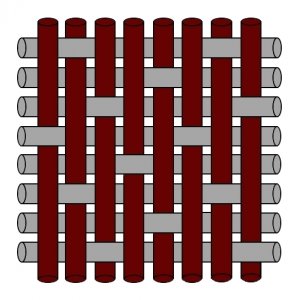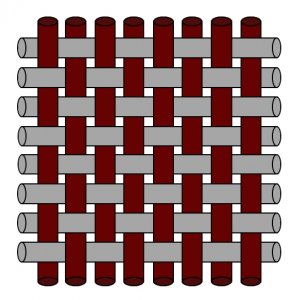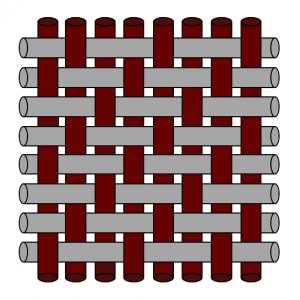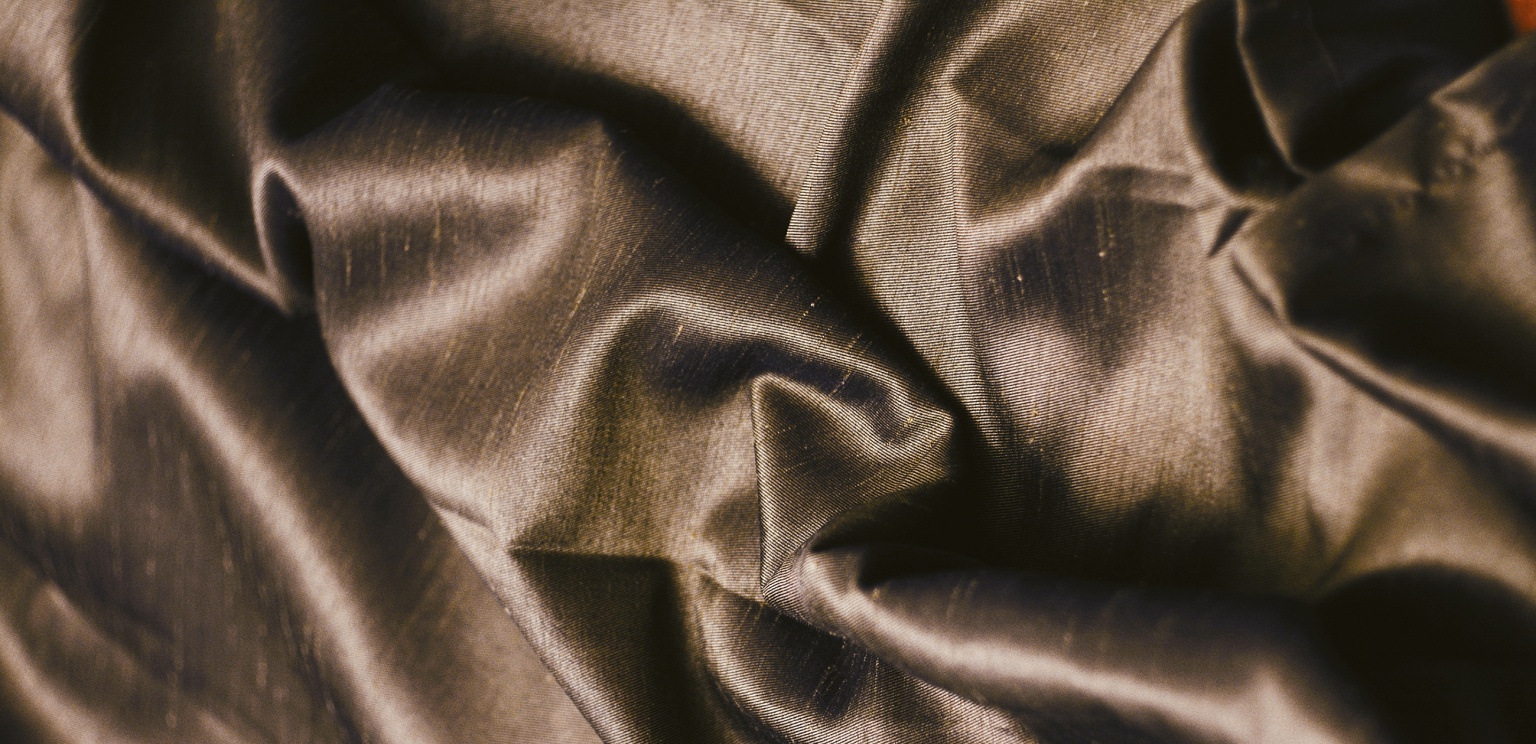Types of binding
Atlas weave
The most important characteristic feature of the atlas weave is a glossy and a matt fabric side. A variety of visible warp threads provide that matt effect of the fabric. Compared to taft woven fabrics like Habotai silk, atlas woven fabrics have a higher stiffness and and a less scuff resistance. The atlas weave is also known as satin weave. Well known qualities are: Duchesse, Satin.

Plain weave
The so called plain or taffeta weave is the most traditional of all weaving types. Plain woven fabrics have a high durability and a resistance to scuff. Characteristic of the plain weave is that the fabrics have two identical sides. Known plain woven fabrics are: Taffeta, Doupion.

Twill weave
Twill woven fabrics have a characteristical diagonal pattern which is also known as twill line. The twill weave can be produced in an equal oder unequal version. A multitude of variations of the weaving process enables different kinds of look. Depending on factors like fiber density, twill bound fabrics can get a stiff or also a flowing character. Known twill woven fabrics are: Tweed, Twill.

Crepe weave
The crepe weave is a binding type which is based on the plain weave. Spurious crepe, such as sand crepe is made by this special type of binding. Real crepe fabrics include qualities such as Crêpe de chine or Chiffon. During the production process, twisted yarns are woven in atlas / satin weave. This creates the characteristical sand-like surface of the fabric. Neither vertical nor horizontal stripes may occur during the production. This lends the fabric its irregular strucure, which makes it similar to real crepe fabrics.
